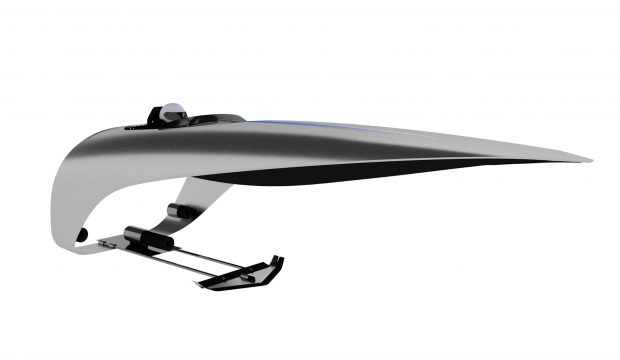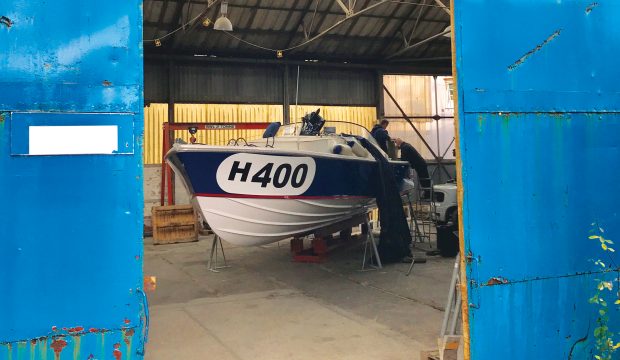Could this powercat design be the key to bringing the Blue Riband trophy back to the UK? Ray Bulman reports on a new Atlantic speed record bid
An attempt to break the Atlantic crossing speed record is being planned by a new group called Team Great Britain, headed by offshore powerboat enthusiast Richard George.
The crossing is to be made by a 112ft (34.2m) wave piecing catamaran TGB34 (pictured above), designed by Andrew SN Lea and George Robson.
With a huge beam of 42ft (12.8m) it has an unusually high length-to-beam ratio for an ocean-going catamaran.
Design is currently at an advanced stage with several successful tests already carried out on a one tenth scale model in Abu Dhabi.
However, since the group is still searching for a suitable yard to partner with for full-scale construction, the actual Transatlantic attempt is unlikely to be made before 2018.
The plan is to cross the Atlantic in two days on a single load of fuel, which if successful will make TGB34 the only non-passenger vessel to cross without at least two mid-ocean fuelling stops.
A two-day crossing would knock over ten hours off the time set by the Aga Kan’s motor yacht Destriero which set the current record time of two days ten hours 54 minutes in 1992.
A two-day crossing will need the craft to produce an average of around 64mph, which in turn will require a top speed of 80mph (70 knots). Hence light winds and calm seas will be essential for success.
Project leader Richard George is the driving force behind Team Great Britain, having previously competed in the World XCAT racing series.
Other members of the team include Dag Pike, who navigated the successful Virgin Atlantic Challenger II crossing in 1986, and Dan Stevens, the current owner of VACII.
“I want to bring the Hales Trophy back to Britain,” says Richard George. “We are a great seafaring nation and any success is certain to be beneficial to our marine industry as a whole.”
And on his team: “We see ourselves as the ‘McLaren’ of the seas and with a green purpose; where efficiency in design using F1 and aerospace innovation, and advanced engineering techniques not only makes vessels much faster but means they require massively less fuel to undertake the task.”
The only problem is that the Hales Trophy, also known as the Blue Riband, is currently held by the Tasmanian company Incat Ltd which built the 298ft (91m) fast passenger ferry Cat-Link V.
She currently holds the record for the fastest crossing by a commercial passenger vessel with a time of two days 20 hours nine minutes and is the true holder of the trophy under current rules.










